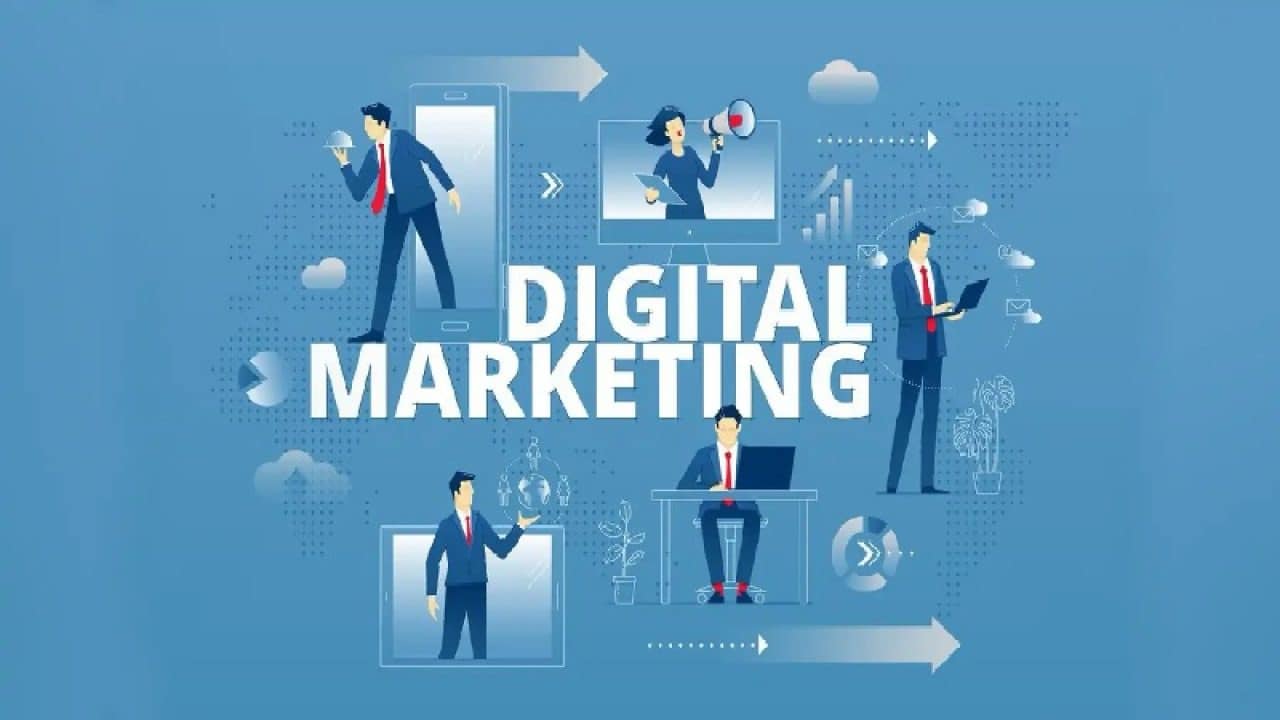With geofencing, businesses can target ads to people inside a defined geographical area, elevating the effectiveness of mobile marketing. Using a number of different technologies, geofencing creates a digital perimeter around a company’s physical location. While geofencing has been around for some time, its true value as a marketing tool for business owners has only just become apparent with the rise of smartphones and other mobile devices. Businesses can reach their target audience more effectively by using geofencing marketing, a location-based marketing tool. The number of people exposed to your marketing messages and ads on mobile devices can be significantly increased by employing this location-based technique. Thanks to geofencing technology, Your audience will be more receptive to your marketing efforts if you reach them when and where they are physically present. But, how do you set up geofencing marketing campaigns, and what are the best geofencing software and companies?
Read on to find out more.
What is Geofencing Marketing?
Geofencing marketing is a form of location-based marketing solution through which local companies can engage their customers more effectively. They accomplish this by sending pertinent information to smartphone users who cross a predefined line or reach a specific location.
location or area and keeping track of moments when someone using a mobile device breaches them. When this occurs, the user’s mobile device will receive an advertisement for a local business, franchise, or service.
Also known as geofencing advertising, this is a cutting-edge method for zeroing in on a company’s ideal clientele. You can see why this is the case if you consider how conventional forms of advertising function. A business generally distributes advertisements through flyers, newspapers, magazines, radio, TV, and other forms of mass media in an effort to reach as many people as possible. This is a somewhat haphazard strategy, though, as it’s just as possible that the individuals they reach will have no interest in what the business has to offer as they will genuinely want the promoted goods or services.
Instead, using geofencing, advertisers can basically choose very precise geographic areas in which their advertisements will appear. This enables them to reach locals who, due to factors like proximity, demography, brand affinity, etc., are more likely to patronize a given establishment. In comparison to widespread, semi-random, and costly mass advertising, this is significantly more efficient and successful.
How Geofencing Marketing Works
Generally, geofencing can happen in three different ways. The first has a radius around the centroid. This entails determining the center point of a structure or piece of land and then figuring out how far each direction travels from that point (i.e., the radius). This thus establishes a broad proximity zone that triggers the delivery of advertisements anytime a user of a mobile device is significantly closer to a point of interest.
The second, usually referred to as an isochrone, has a walking or driving duration. This, however, entails figuring out how long it will take to go by all available means of transportation from one location to a specific destination. This allows businesses to target only those customers who are within a reasonable driving distance. A more nuanced form of geofencing, this one promotes patronage based on accessibility rather than mere proximity. This is due to the fact that there may still be roadblocks or a lack of transportation links that prevent locals from easily accessing a business.
The third involves the footprints of buildings. This approach represents the precise geographic boundaries of an area of interest, such as a whole building, a park, or a single storefront, using calculated polygons. Then a company can only notify people who have really entered the facility or are on the property. This generally targets customers who, by entering a store, may be considering making a purchase.
What Are the Two Types of Geofencing?
Basically, there are two types of geofencing; active and passive.
In order for active geofencing to work, the user’s mobile app must be open. Normally, this software uses the user’s GPS service. Companies can, for instance, directly send advertisements or personalized messages to a customer via active geofencing.
On the other hand, passive geofencing operates in the background without the need to launch or activate an application and also does not utilize GPS. Passive geofencing, as the name suggests, predominantly serves to gather client information such as where they do shopping, how long they spend in stores, etc.
Is Geofencing Marketing Effective?
Businesses may engage with their clients and virtually meet them wherever they are through the help of geofencing technology. By focusing on their audience’s proximity and position, businesses may reach customers when and where they are most likely to interact and make a purchase.
How to Set Up Geofencing Marketing
Choose the campaign you want to administer in Google AdWords before you can set up geofencing marketing. Then, navigate to Campaign Settings. You can geofence campaigns for search, display, and Youtube on the Google Advertising platform. There are many possibilities if you’ve chosen geofencing in Google AdWords.
#1. Geofencing Location Targeting
Inputs needed include country, state, city, DMA, metro, ZIP, and radius. However, you should be mindful of the not-included parts. Location targeting in Google AdWords encompasses both geofencing and geotargeting. If you’re using Google AdWords, geofencing can help boost your quality score by ensuring that local users see ads that are more relevant to them.
Expanding Google AdWords geofencing options is as simple as clicking the Places tab. Here are some of the best geofencing and geotargeting toolkits for you:
- All countries and territories
- United States and Canada
- United States
- Enter another location
Use the location-entry option to use geofencing for the majority of local advertising campaigns. After that, you can utilize the search option to begin entering a target location. Based on your input, the tool will return results that are relevant to your desired location.
For instance, if you were to search for Massachuttes, the system would present you with a number of alternatives, find a match, and return the potential reach for each of those geo-targets. In Google AdWords, “reach” refers to an estimation of the local population. This considers the geofence’s objective and excluded locales as well as the campaign’s geo-targeting options.
#2. Geofencing Radius Targeting
Click the “Advanced” button to access more precise geofencing options. While conducting an advanced search, you will have the option to include or remove specific regions. Excluding a region from your targeting will prevent your ad from being shown to anyone in that region.
Google Adwords generally offers choices for targeting a location’s radius based on the distance in miles or kilometers.
In this circumstance, a kilometer radius is preferable to a mile radius if, for example, you’re running a marketing campaign with exceptionally precise geofencing or geotargeting parameters. Choose the Radius Option under “Geotargeting” if you want to use that method of targeting.
Running display advertising near a hospital can be quite fruitful for a lawyer or law firm that uses this form of targeting. Hence, this precise geolocation targeting can be useful in an infinite variety of contexts.
What Is the Importance of Geofencing Marketing?
Now that we have a basic understanding of what geofencing marketing is and how it operates, let’s take a look at the key benefits of geofencing marketing:
- Because they are provided practically instantly in reaction to a potential customer’s activities, geofencing advertising is frequently preferable to traditional ones.
- Boost customer commitment and loyalty
- Geofence advertising has the additional benefit of covering particular geographical regions.
- Geofencing improves both your data and your analytics.
- Another key benefit of geofencing advertising is that it increases user engagement
- A geofencing marketing campaign is also economical since it can be set up in precise places.
Geofencing Marketing Companies
With the aid of geofencing marketing companies, businesses may target specific customers in single or several locations with display or video ads at predetermined times of the week or perhaps a day. Hence, below are some of the top geofencing marketing companies you can consider if you are in need of one;
- Salesforce
- Blue Dot Innovation
- Pusher
- Agility.
- Marketing
- Demand Local
- Simpli.Fi
- Factual
- Ground Truth
- Rhoads Creative
- Swirl
- Propellant Media
- ThinkNear
- Cidewalk
- DataXu
- Xtreme Push
- Ontarget – Geo-Fencing Marketing
- Local Page Pop
- Medialize Marketing
- Choozle
- Reachlocal
- Semcasting
- Kickadzmedia.Com
- OneAudience
- The Trade Desk
- Verve Mobile
- Bluedot Innovation
- Element 502
- Braze
- ChatterBuzz Media
Geofencing Marketing Software
Geofencing marketing software uses real-time location information to start notifications, alerts, or in-app activities. Developers generally incorporate the geofencing API or SDK with an already-existing program or piece of geofencing marketing software, where numerous teams create and manage location triggers.
The following are examples of typical geofencing application contexts:
- Marketing Groups: Make it such that users of your app receive notifications of sales when they are near your stores.
- Tourism Sector: Provide location-based informational notifications with a tourism app.
- HR: Use geofencing to verify that workers are present at their assigned locations.
- Zoning for Buildings: Make sure no equipment or vehicles leave the building without permission.
Due to its integration-friendly design, geofencing marketing software is frequently used in tandem with other tools like rapid application development (RAD) software, ALM suites, or integrated development environments (IDEs).
Marketing software must meet the following criteria to be eligible for the geofencing classification:
- Utilizing an API or SDK to integrate into apps or software
- Create in-app events, notifications, or alarms when you arrive at a geofenced location (s)
- Create analytics dashboards and reports using location-based information.
What is the Best Geofencing Marketing Software in 2023?
Below are some of the best geofencing marketing software available;
- WebEngage
- Connecteam
- Netcore Customer Engagement and Experience Platform
- Radar
- GeoComply
- Roam.ai
- AirDroid Business
- XMPie
- PlotProjects
- Skyhook Context SDK
- Bluedot
- ArcGIS Tracking Analyst
- Pilgrim SDK
- HERE Location Services
- Bubbl
- Purple
- Woosmap
- Bleesk Proximity Platform
- Logitrack
- Pulsate Locate
What Are the Disadvantages of Geofencing?
There are numerous drawbacks of the geofencing technology among which are;
- The maintenance of the technology might take a lot of time.
- Privacy Issues Cause Pushback.
- This process causes batteries and data to drain.
Which Is an Example of Geofencing Marketing?
- How BMW turned geofencing into a service
Geofencing is a common marketing strategy for businesses, and BMW also makes use of it as a differentiator. In what way though? This is basically through their BMW Trackstar and BMW Trackstar Advance services, which monitor the location of your car to guarantee its safety.
In a situation where your car moves without your car keys, BMW immediately notifies you.
Geofencing was successfully incorporated into BMW’s marketing and commercial strategy. The service not only benefits customers but also provides the business with a steady stream of income.
There is, however, an annual subscription cost for BMW Trackstar and BMW Trackstar Advance.
Geofencing Marketing Campaigns
Geofencing marketing campaigns are a type of location-based advertising in which consumers are targeted based on their location in real-time in relation to a predetermined radius (or geofence) surrounding a particular site. Consumers’ willingness to engage in location-based services on their mobile devices makes this viable.
Based on parameters specified by the advertiser, such as proximity to the location, weather, online and offline activity, time of day, and more, geofencing marketing campaigns can be used to draw visitors to a physical site. Geofencing marketing strategies, sometimes known as “Geo-conquesting,” include luring clients away from rival businesses when they approach a competitor’s area.
Although geofencing marketing campaigns can be a successful tactic, it’s critical to recognize their limitations. For instance, using a geofence to check if a customer is in a certain location might not be the most precise application. In these circumstances, it is advisable to use polygons.
What are the Steps to Run Successful Geofencing Marketing Campaigns?
The 5 basic steps to running successful geofencing marketing campaigns are;
- Research
- Budget for your Location
- Personalized Ad Copy
- Leverage Time and Date for Retargeting
- Testing & Experimenting
Conclusion
Despite its apparent complexity, geofencing marketing is actually quite simple, especially if your business is working with a seasoned geofencing marketing firm with years of experience.
In order to pinpoint a user’s mobile device’s location and its proximity to a given location, geofencing combines both GPS technology and mobile network triangulation. Hence, you can reach out to customers when and where it makes the most sense. With geofencing, you may improve your localized marketing strategy and also increase participation. Plus, to gain an edge over the competition, you can employ geofencing as a strategic marketing tool.
Related Articles
- GEOFENCING: Meaning, Types & Benefit
- FRANCHISE MARKETING: Meaning, Strategy, Example & Agency
- CONTENT MARKETING SERVICES: Best Services for Traffic, Rankings, & Sales
- DIGITAL ADVERTISING: Meaning, Examples, Strategies & Alliance






